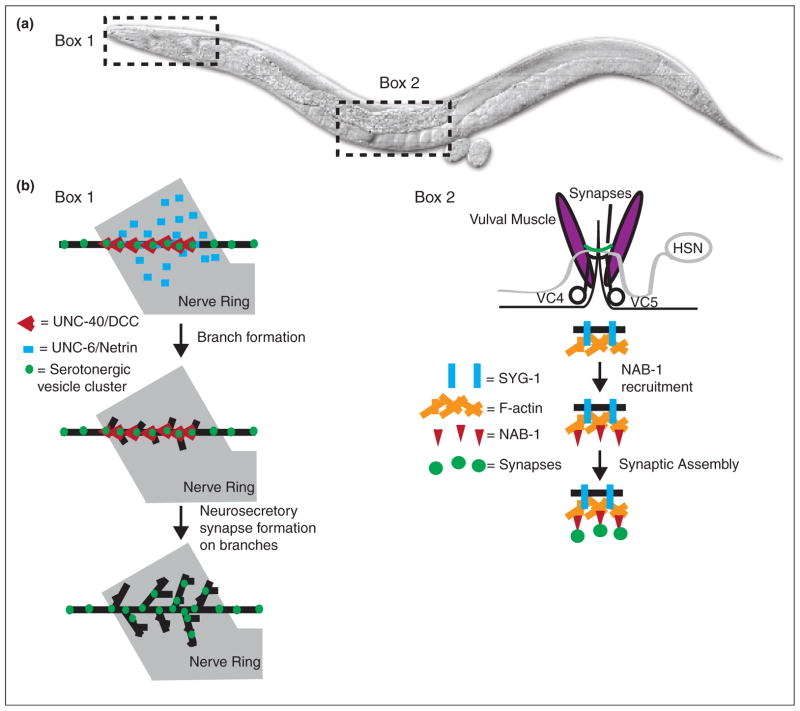Figure 3.
Control of synaptic specificity in C. elegans. (a) A diagram of C. elegans, with boxes showing two regions described in the review. (b) Box 1: Netrin/UNC-6 and its receptor DCC/UNC-40/Frazzled control neurosecretory arbor formation in the NSM neuron. The Netrin receptor DCC/UNC-40/Frazzled (red V) localizes to serotonergic vesicle clusters (green) in the main axon shaft (black) of NSM. Following receptor localization and response to Netrin/UNC-6 (blue bar) secreted by neurons in the nerve ring (gray), axon arbor branch growth starts at sites of DCC/UNC-40/Frazzled localization. Following branch growth, new neurosecretory synapses form in the branches. Box 2: NAB-1 links the actin cytoskeleton to synapse formation in the HSN neurons. The HSN neuron (gray) forms synapses (green) onto vulval muscles (purple). VC4 and VC5 are ventral cord neurons also involved in synapse formation. The adhesion molecule SYG-2 (not shown) is expressed in vulval epithelial cells that act as guideposts. Presynaptic SYG-1 (blue bar) interacts with SYG-2 and directs F-actin (orange) assembly in HSN. NAB-1 (red triangle) binds to F-actin, where it subsequently acts to recruit synaptic assembly proteins and form synapses (green circles).

